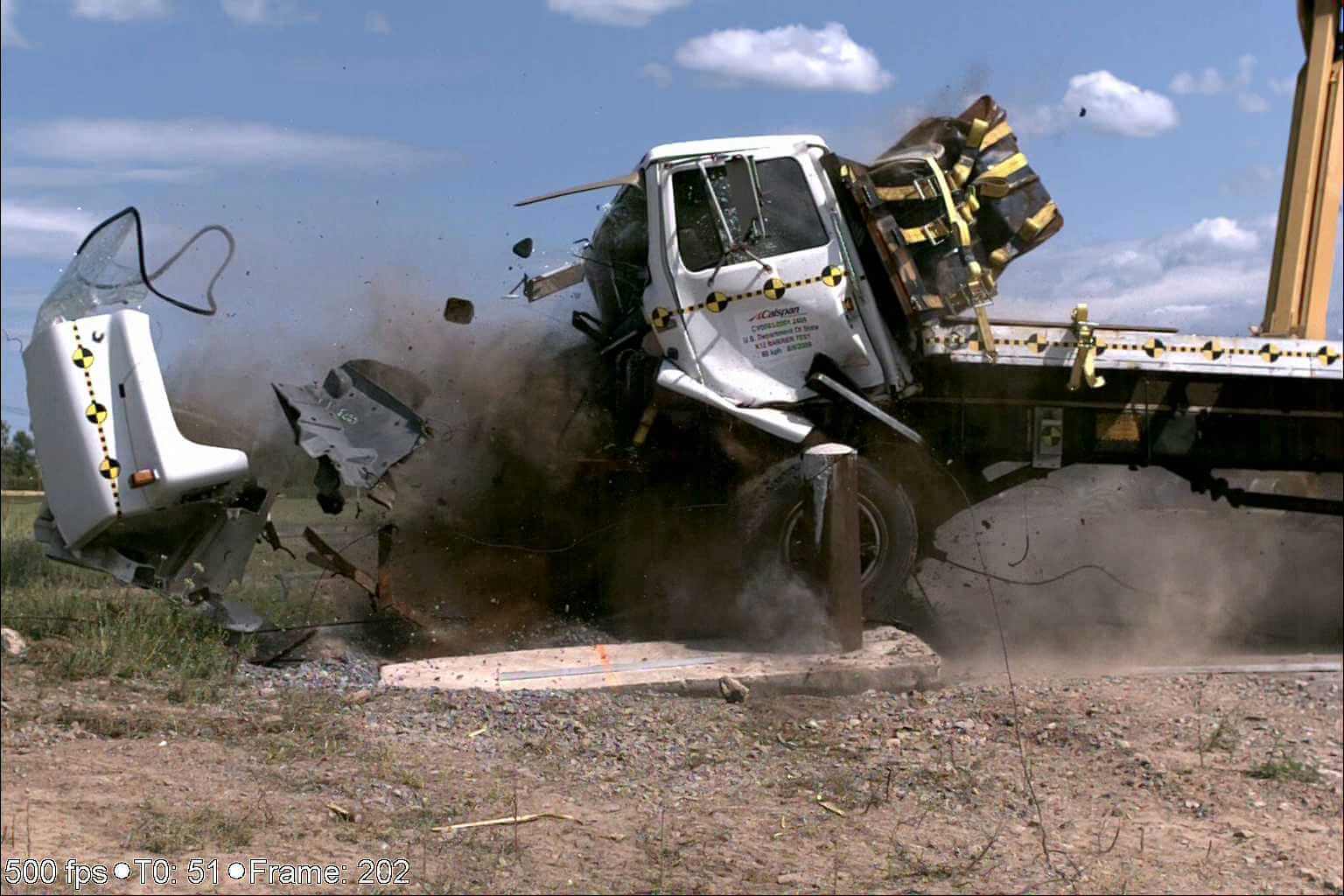The rollout of ASTM2656f-17 is not set to a date yet; however, the changes that are being proposed will alter the test methodology enough that new procedures will have to be developed by testing agencies. New regulations may be in place as soon as late May 2017 barring any new issues or negative votes among stakeholders.

The ASTM 2656F meeting on April 4, 2017, revealed a few interesting items are in the final stages of review and approval:
- The committee proposed that the A-pillar should be the reference point for a test with a pickup truck. The reference point was previously at the leading edge of the bed. The reference point will be the leading edge at the base of the A-Pillar.
- The reference point of the barrier will be defined as the 3.1.5, the leading edge of the structural component at first impact. Structural component – the portion of the barrier that provides structural resistance to arrest the vehicle. The intent is that any ornamental or decorative items on the barrier are not to be considered “structural components”. The extent to which the decorative items are structural shall be determined by the Test Director.
- PDC expects that the companies designing and selling barriers will be testing to ASTM2656-17 standards and previous products will not be grandfathered due to the significant material changes to the standard. The products tested according to ASTM2656-07 will remain on the PDC list of approved barriers, however, the barrier certification will be noted according to the 07 standard.
- In terms of installation, the Test Director shall determine whether the soil around the barrier must be replaced behind the barrier only or if the soil must be replaced on the side of the barrier. If there are lateral forces, the test director shall install low cohesive soil around the barrier 1.5 times the depth of the barrier on all sides.
- The committee agreed to eliminate the 30MPH test with passenger vehicles (SC30, FS30, and PU30).
- Discussed modifications to the Penetration Ratings Table 2. A suggestion was made to update and eliminate numerical penetration values which are between P1 and P2 (1.00 m to 1.01m) or P2 and P3 (7.00m and 7.01m).
- P1 will include penetrations between 0 and 1m or equal to 1.0m
- P2 will include penetrations greater than 1.0m up to or equal to 7.0m
- P3 will include penetrations greater than 7.0m up to and equal to 30.0m
One of the more interesting pieces of information to note is that existing barriers are not grandfathered into currency. The material changes represented in the new standards create safer barriers, and although no one wants to rerun tests for certification, the change will prove to be a positive one for the industry.
Material change examples:
- The most significant change is that the Dynamic Penetration Distance for ASTM2656-17 will be referenced to the “leading edge of the barrier being tested”. This change was implemented in order to eliminate any ambiguity related to the determination of reference points which were specified to be located on the trailing edge of the barrier in ASTM2656-07. Further, this change to the location of the reference point serves to harmonize with the European Union standard.
- The previous methods for attaching the bed of the truck proved to be inadequate by the detachment of the bed following impact. Consequently, the committee agreed to increase the number of shear plates to a quantity of 3. The shear plates are intended to ensure that the bed remains attached to the truck in order to impart the greatest load into the barrier.
As barrier testing evolves, the standards to which customers receive protections improves. Adding additional cost in terms of both capital expenditure and time resources may create hesitation in adapting to new standards; However, these changes mostly represent forward progress in an industry where testing is critical to the success rate of its products.
If you have any questions relating to the proposed changes and how they affect testing and certification, contact Calspan and we’ll answer them as best we can.
More information about ASTM can be found on www.astm.org.
To purchase a copy of current standards from ASTM click here.